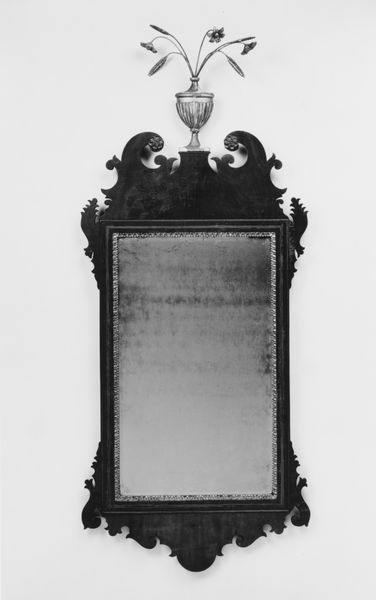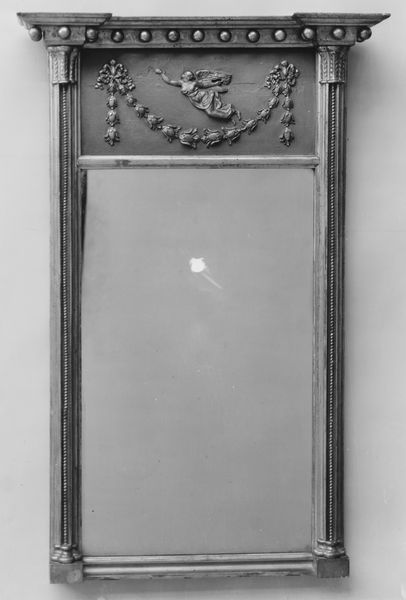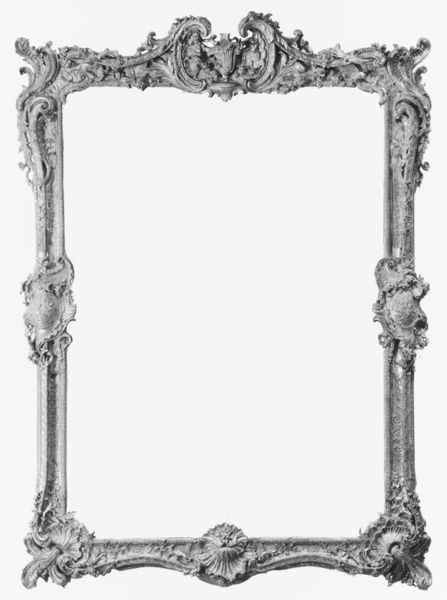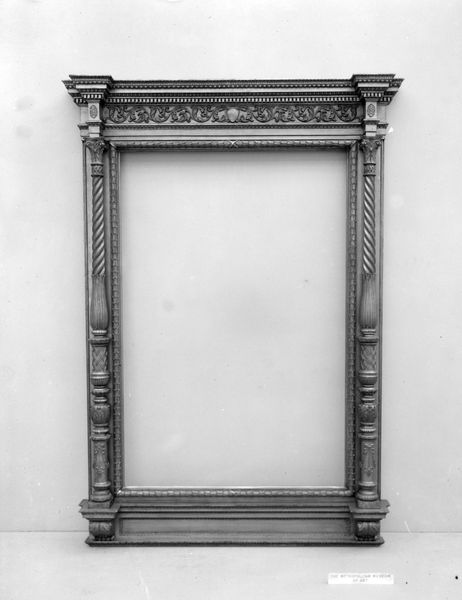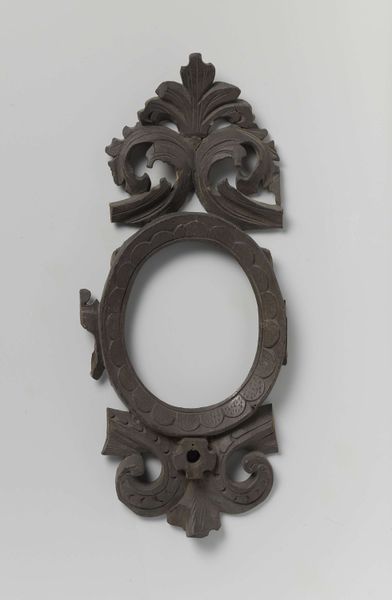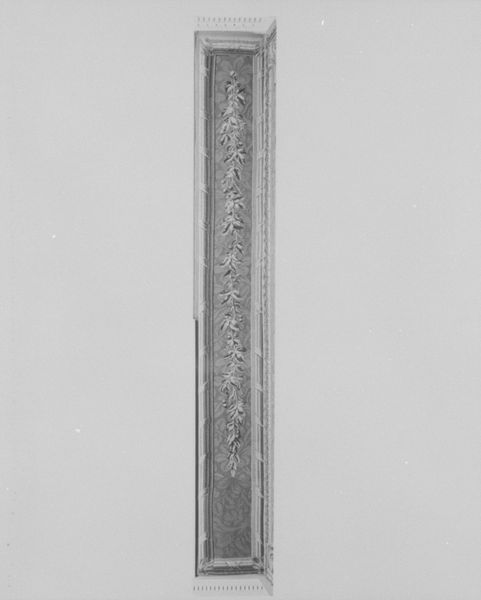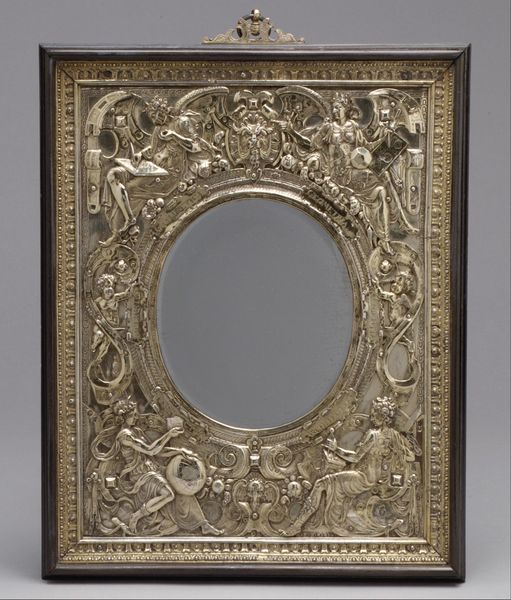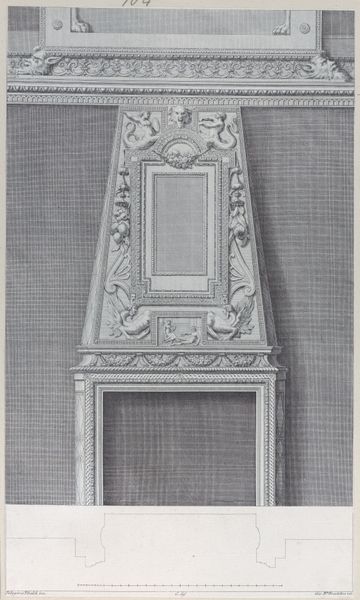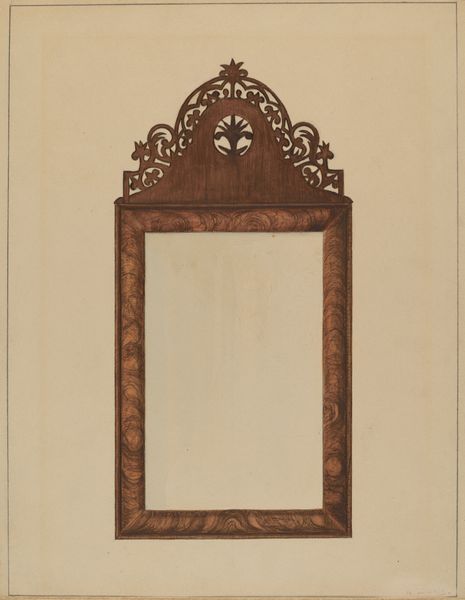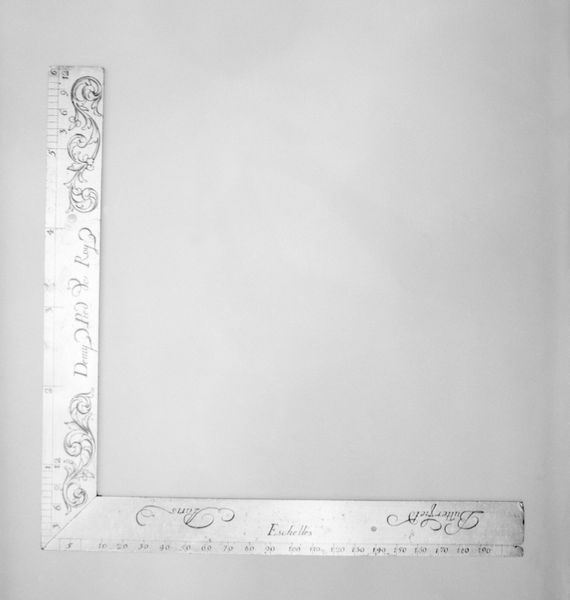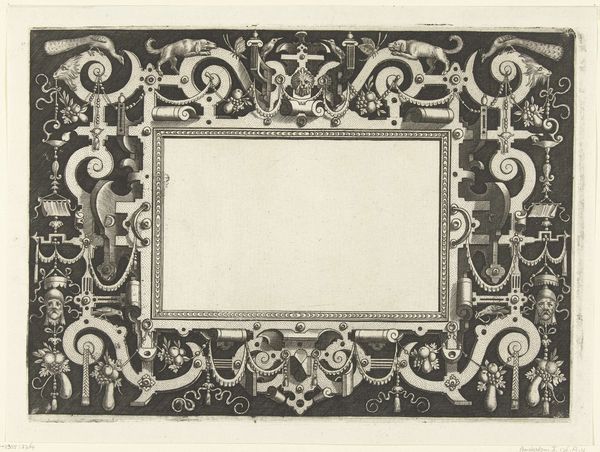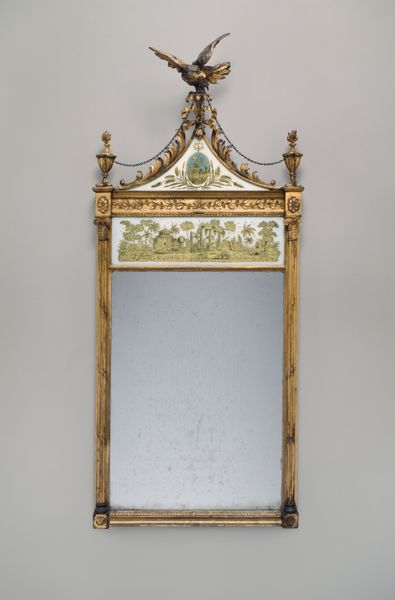
Part of a carving from an overmantel (five parts) 1670 - 1680
0:00
0:00
carving, relief, sculpture, wood, architecture
#
carving
#
baroque
#
sculpture
#
relief
#
landscape
#
sculpture
#
architecture
#
wood
#
decorative-art
#
architecture
Dimensions: 197 x 106 1/4 in. (500.4 x 269.9 cm)
Copyright: Public Domain
Editor: So, here we have "Part of a carving from an overmantel (five parts)," crafted sometime between 1670 and 1680 by Grinling Gibbons. It's a baroque wood carving. What I find striking is its sense of contained wildness – like nature barely held in check by design. What do you see in this piece? Curator: That "contained wildness" is a great way to put it! I'm drawn to the incredible skill, really the audacity, required to coax this level of detail from wood. Think about the artist's mind, envisioning those tumbling flowers and crisp leaves, layer upon layer. Gibbons was known for this hyper-realistic style. Does the naturalism speak to you, even despite the formal arrangement? Editor: Definitely! I almost forget it's a carving sometimes. The way the light catches each tiny element creates such a vibrant surface. What would an overmantel like this have signified to people back then? Curator: Well, these overmantels were essentially badges of honor, signs of wealth, sophistication, and connection to the natural world - especially popular in grand houses during the late 17th century. They turned ordinary interiors into breathtaking displays. Each flourish served as a whisper about the homeowner's status. And Gibbons was like, the ultimate master of the whisper! Have you noticed how the garlands frame the central space? Editor: I see it now, almost like a stage for whatever was placed beneath it – a painting, perhaps a mirror? It really does draw your eye. Curator: Exactly. And consider the symbolism! Eagles representing power, flowers embodying beauty and fleeting time. They all added layers of meaning to the piece. It makes you wonder, doesn't it, what conversations it sparked, what reflections it held, back when it adorned some long-forgotten room? Editor: It’s fascinating how much history and meaning can be packed into one piece of decorative art. I'll never look at wood carvings the same way again. Curator: And I’m seeing fresh again how carving can be so very moving and expressive, beyond mere function or decoration! It can tell tales and offer endless whispers.
Comments
No comments
Be the first to comment and join the conversation on the ultimate creative platform.
